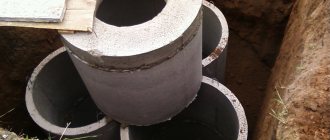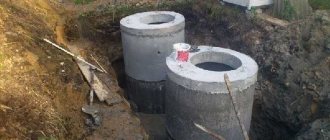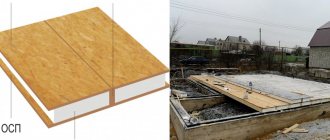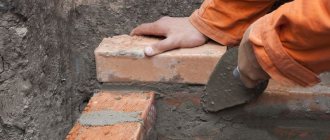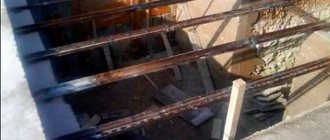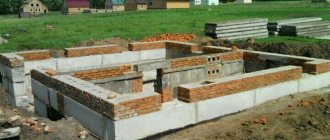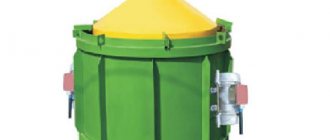Why is this necessary?
It is clear that since the market exists, the corresponding goods are in demand. What could motivate the owner of a site to purchase a ready-made solution instead of building it himself, which in most cases will be cheaper?
There are several possible reasons.
- Saving time . Construction often takes many months, but a finished cellar can be installed within a day.
- Lack of construction experience . In fact, if a person has no experience working with brick and concrete, is it worth it to waste time and effort on learning a specialty that is unlikely to affect his income in the future?
To counter-argument: You can certainly hire professionals to do this job. But then the economic feasibility of construction will become much more doubtful, but we will not escape the time spent on construction.
- Finally, the main problem that may prompt the purchase of a ready-made structure is the high groundwater level . If the water is half a meter below the surface, you have to choose between installing a ready-made sealed cellar in a pit dug by an excavator and a bulk cellar, which will take up a fair amount of space on the site.
Horizontal (not recessed)
There is another cellar made of concrete rings - horizontal type. This is a shallow or above ground cellar. This design is suitable if the groundwater is very high. Dig a shallow pit (at least 50 cm deep, but it can be deeper - as conditions allow).
How to make a cellar from concrete rings
A foundation slab is made in the pit (10 cm thick and 20-30 cm larger in size than the dimensions of the future basement). 10-15 cm of crushed stone is poured onto the compacted bend. Pour in layers, 5 cm at a time, each layer is thoroughly compacted. Then pour and compact about 10 cm of sand. A film is spread over it, formwork is placed, and a reinforcing frame is placed in it (one belt of 10 mm reinforcement with a step of 20 cm). Under the rings laid on their sides (make a mock-up of the lower part from plywood and boards and use it as formwork). When the concrete has set, you can roll the rings into place.
The rear ring can have a bottom - then there is no need to invent a rear wall. If the ring has no bottom, the wall is covered with bricks (one and a half bricks), not forgetting to remove the exhaust pipe for ventilation. Then the supply hole is made in the opposite wall near the door.
By connecting the fragments using construction staples and sealing the joints with mortar, you get an almost finished cellar. The laid rings are covered with soil, forming a hill.
Above ground bulk cellar made of concrete rings
Now all that remains is to install the doors and fill the remaining gaps. Place metal corners or impregnated (treated) wooden beams to which the doors are attached. It is most convenient to fill the remaining gaps with bricks or backfill (with natural stone and mortar). The front wall either must be insulated from the inside, or it must be made thick - this is the only wall facing the outside.
let's get acquainted
What are the structures we are studying?
Shape and dimensions
As a rule, the shape of the products is a variation on the theme of a cylinder (vertical or horizontal) and a rectangular parallelepiped.
A cylindrical surface is more advantageous from two points of view:
- The cylinder has a larger volume with a smaller wall area and, therefore, less material consumption for their creation.
- A cylindrical surface is capable of withstanding greater compressive pressure without deformation for the same wall thickness.
Various cubes and parallelepipeds are usually created due to technological limitations. They are simply easier to make from sheet material; a finished concrete cellar with flat walls requires much simpler formwork for pouring.
Drawing of a cubic cellar.
What about the volume? The minimum is about 2 cubic meters. On sale you can find miniature products measuring 1.2x1.2x1.5 meters. The owner of such a structure is forced to keep the cellar hatch open during his visit - otherwise it simply won’t fit in the cell.
The maximum volume is limited only by transportation capabilities. You can find products of 15-20 cubic meters on wide sale; making large cellars does not present any special technological problems, but is required extremely rarely.
Material
What are factory products made of?
Fiberglass
The advantage of fiberglass is that the production of products from it does not require complex equipment. It is enough to build a template, cover it with fiberglass and apply several layers (more often, however, we are talking about several dozen) of epoxy or other synthetic resin. Due to the low cost of production, the price of the finished product is quite affordable.
From a consumer's point of view, however, the material is not that interesting. It is quite fragile and requires additional protection when installed in the ground. However, more about her a little later.
The material of this product is fiberglass.
Polyethylene
Extremely durable and chemically inert material. Not very durable, which, however, in older models of products is compensated by double walls with stiffening ribs between them. Overall a great choice.
Polypropylene
This plastic is somewhat lighter than polyethylene, but it has greater mechanical strength and rigidity, which allows you to make the walls of the cellar a little thinner. The service life is estimated by the manufacturer to be the same 50 years or more as the previous material. If the difference in cost does not bother you (polypropylene is about 10 percent more expensive), you can only applaud the purchase.
Steel
With a relatively small wall thickness, steel products are much heavier than plastic cellars. What is much more important is that steel is afraid of contact with water. Of course, anti-corrosion protection is mandatory; however, the bituminous mastic commonly used to coat steel walls can be damaged during installation - with obvious consequences after several years.
Welded construction made of 4mm steel.
Reinforced concrete
In terms of weight, the finished reinforced concrete cellar is a clear record holder, which often means serious problems with transportation. In terms of durability, it is somewhat inferior to plastic products. The cost is approximately at the same level. Questionable decision.
However: the undoubted advantage of reinforced concrete is its significant mechanical strength. This is important on moving and heaving soils. In addition, the installation of a reinforced concrete cellar is much simpler than in the case of plastic analogues.
Combined materials
There are quite a lot of designs on the market that combine dissimilar materials.
Let's mention some of them.
- The outer shell is made of fiberglass. Internal – steel; Between the bodies in the upper part there is a layer of heat-insulating material.
- The plastic case is equipped with a reinforcing frame made of galvanized steel.
- The reinforced concrete body is cast in permanent foam formwork. As a result, the walls and ceiling of the structure are three-layer: reinforced concrete is hidden by external and internal insulation.
Permanent formwork allows you to get a durable structure with ready-made insulation.
Production of concrete cellars, caissons and fonts
Typically, a cellar has always been and is being made in the ground, since the ground is an excellent heat insulator and almost always maintains the same temperature and humidity. These conditions are very important, as they allow you to preserve vegetables and fruits in excellent condition for a long time.
Cellars for drinks were called wine cellars. Various containers with wines, cognacs and other things were stored in them. After all, ripening also requires a constant temperature.
Instead of refrigerators, glaciers were also used (a pit in which ice was stored in winter and covered with straw on top of the ice) for storing meat, fish, and products that needed to be stored at low temperatures. Nowadays, it is also possible to create a glacier, but instead of open ice, plastic canisters are placed with frozen ice.
The options for making the cellars themselves were different:
- buried cellars
- shallow
- bulk (those that stand on the surface and are embanked with earth)
This was due to the territorial location and the ability to make the cellar itself. Rocks and stony soil are one type, sandy soil another, marshy soil another, etc.
Nowadays, of course, you can go out and buy groceries and not worry about storing supplies for the long term. Shops and shopping centers are apparently not visible. But is it as it seems?
Of course not! Having a supply of self-grown products, a supply of canned twists, and self-made wines is great! There is nothing more pleasant than going down to your cellar, getting a jar of homemade jam for tea, or a jar of cucumbers and tomatoes for lunch or dinner, fruit that hung on the trees of your garden and has not even lost its original appearance and taste, or watching it ripen your wine!
We offer a large selection of sizes, types of cellar designs, and entrance options. Our specialists are ready to help you with your choice and make a concrete cellar for storing crops, or a wine cellar for storing your wine collection.
We have been studying different types of cellars for several years now - starting from the simplest - a concrete cube, and ending with large prefabricated arched cellars (you can see examples of execution on our website). We have worked through many options and settled on those cellar models that will not only perform function of a cellar, but also be a decoration of your site - a landscape highlight!
Thanks to our company, you will get what you need quickly and in the shortest possible time!
Installation
How are the products we discuss installed? The instructions depend on the material from which they are made.
Reinforced concrete
The reinforced concrete cellar is simply lowered into a previously dug pit and filled with previously excavated soil. In some cases, the roof can be additionally insulated with expanded clay backfill or other insulation materials. As you can see, at the installation stage this material creates a minimum of problems for the owner.
Place it in the pit and fill it up. End of instructions.
Other materials
But in all other cases we are faced with two serious problems:
- Deformation of walls under soil pressure. However, products with stiffeners and a reinforcing frame do not have this problem.
- The cellar will float up due to its average density being much lower than that of the soil.
Both problems, however, can be solved.
- A reinforced concrete slab is placed at the bottom of the pit, acting as ballast. The cellar body is attached to it with strong straps.
- Backfilling is carried out not with soil, but with a cement-sand mixture in a ratio of 1:5. When moistened, such backfill forms a durable sarcophagus that prevents deformation of the walls and the floating of the structure.
The photo clearly shows the cement and sand prepared for backfilling.
